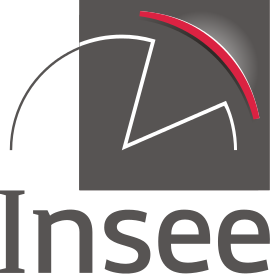General government in 2023 National accounts - 2020 Base
Pour comprendre
General government sector (S13)
The general government sector consists of all legal entities that have executive, legislative and judicial authority. As institutionnal units, their function is to provide goods and mostly services to the community or to individual households. This sector include units that redistribute income and wealth by transfers. Governmental units are non-market producers. The resources mobilized to achieve all these functions mainly come from compulsory withdrawals paid by other institutional sectors.
The general government sector is divided in three subsectors:
- central government (S1311) having a competence over the whole economic territory,
- local governments (S1313) having only a local sphere competence,
- social security funds (S1314) that regroup central or local administrations whose principal activity is to provide social benefits and hospital services mainly financed by public funds.
Each subsector is subdivided in two subsets, according to a criteria of general competence or more specialized competence:
- central government includes "State" government and miscellaneous central government bodies,
- local governments are subdivided in local governmental units (municipalities, districts...) and miscellaneous local organizations,
- social security funds include social insurance schemes and organizations related to social insurance.
Central government (S1311)
Central government includes "State" government and miscellaneous central government bodies (ODAC).
State government (S13111) includes functions of executive authority (Republic presidency, government and ministries), legislative authority (parliament) and judicial authority (courts of justice). In national accounts, central government represents only one institutional unit.
Central government transactions are described in:
- general budget,
- Treasure special accounts,
- subsidiary budgets.
Treasury transactions regroup non-budgetary and non-financial transactions in the meaning of national accounting.
There are two subsidiary budgets: "Air control and operating" et "Official publications and administrative information".
The ODAC (S13112) regroup bodies of miscellaneous legal statutes, often public organizations with an administrative function, generally having a separate legal identity, to which central government has delegated a specialized functional competence at a national level.
The more significant operate upon the followings areas and functions:
- superior education,
- research,
- culture: national theatres and museums, orchestras, National French library...
- social and economic action: authority on financial market, intervention on agricultural markets offices,...
- environment: national parks, seashore conservatory...
- national weather forecast,
- operating of public debt, operating of non performant assets of public corporations (financial defeasance organized by central government): EPFR, CDR,...
- garantee of risks financed by taxes (natural catastrophies, terrorism...), and non submited to Insurance control commission.
Local governments (S1313)
They include local communities and miscellaneous local administration organizations (ODAL).
Local communities (S13131) regroup:
- local communities having a general competence: municipalities, departments and regions (main budgets ans subsidiary budgets),
- public organizations of intertown cooperation (urban communities, communities of towns, of municipalities, water districts, etc.) and other bodies with a non-market activity.
These organizations allow either the widening to several municipalities of the budgetary base necessary for civil engineering and equipment works, either the operating of some public services (transport, collection and treatment of garbage, etc.). Transactions made by these organizations are generally related with those operated by municipalities and departments. Thus, in national accounts, they are regrouped ans consolidated.
ODAL (S13132) regroup:
- non-market units directly related to municipalities and departments: social action centers, school funds, departmental fire and rescue centers...
- unit in charge of territorial developing, often related to central government, but whose financing is local: land development and rural development corporations, new cities public development orgnizations...
- municipal or associative day nurseries,
- consular organizations: chambers of Commerce and Industry, chambers of Trade, chambers of Agriculture,
- cultural associations financed by local governments,
- and public high schools that have been since 1986 public local education centers, financed by regions and departments (except wages of some civil servants).
However, teachers' wages are not included in local governments accounts, but in central government account.
Private high schools ans schools under contract with central government belong to the sector of non-profit institutions serving households (NPISH), but wages of their teachers are always recorded in central government account.
Social security funds (S1314)
Social security funds regroup social insurance schemes and organizations related to social insurance (mainly hospitals with a public financing) (ODASS).
Social insurance schemes (S13141) cover miscellaneous social risks and needs (health, disability and invalidity, occupational accident and occupational disease, ageing, survival, maternity, family, employment promotion, unemployment, housing, education, poverty) that entitle to social benefits. They regroup organizations with a complete sequence of accounts whose activity is social benefits payment, whose principal resources are compulsory social contributions, for which central government fix or ratify the rate. Thus, are included in this subsector social security funds relevant from the Social security Code, but also complementary pension schemes with a conventional status, and UNEDIC (organization operating unemployment insurance).
Social insurance schemes of social security funds mainly include:
- general social security scheme (Caisse nationale d'assurance maladie (CNAM), Caisse nationale des allocations familiales (CNAF), Caisse nationale d'assurance vieillesse (CNAV), Agence centrale des organismes de sécurité sociale (ACOSS)),
- special funds, that serve social benefits and are financed by shares of contributions coming from social security funds, or that allocate income between different funds (Fonds commun pour les accidents du travail (FCAT), Fonds d'indemnisation des victimes de l'amiante (FIVA), Service social d'allocation aux personnes âgées (SASPA), Fonds de solidarité vieillesse (FSV), Fonds de compensation des organismes de sécurité sociale (FCOSS), etc.),
- other employees' base schemes (special enterprise schemes or public corporations schemes, agricultural employees, etc.),
- non-salaried schemes (of which social agricultural mutuality : farmers' schemes),
- unemployment compensation scheme,
- complementary pension insurance schemes for employees (ARRCO, AGIRC...),
- fund for amortization of social debt (CADES),
- reserve fund for pensions (FRR).
ODASS (S13142), that depend from social security funds, include:
- public hospitals, and private hospitals financed by global hospital allowance (allocated by social security funds),
- social or caritative organizations integrated in social security schemes (œuvres sociales de la CNAF, schools for nurses...),
- Pôle Emploi (except unemployment compensation).



